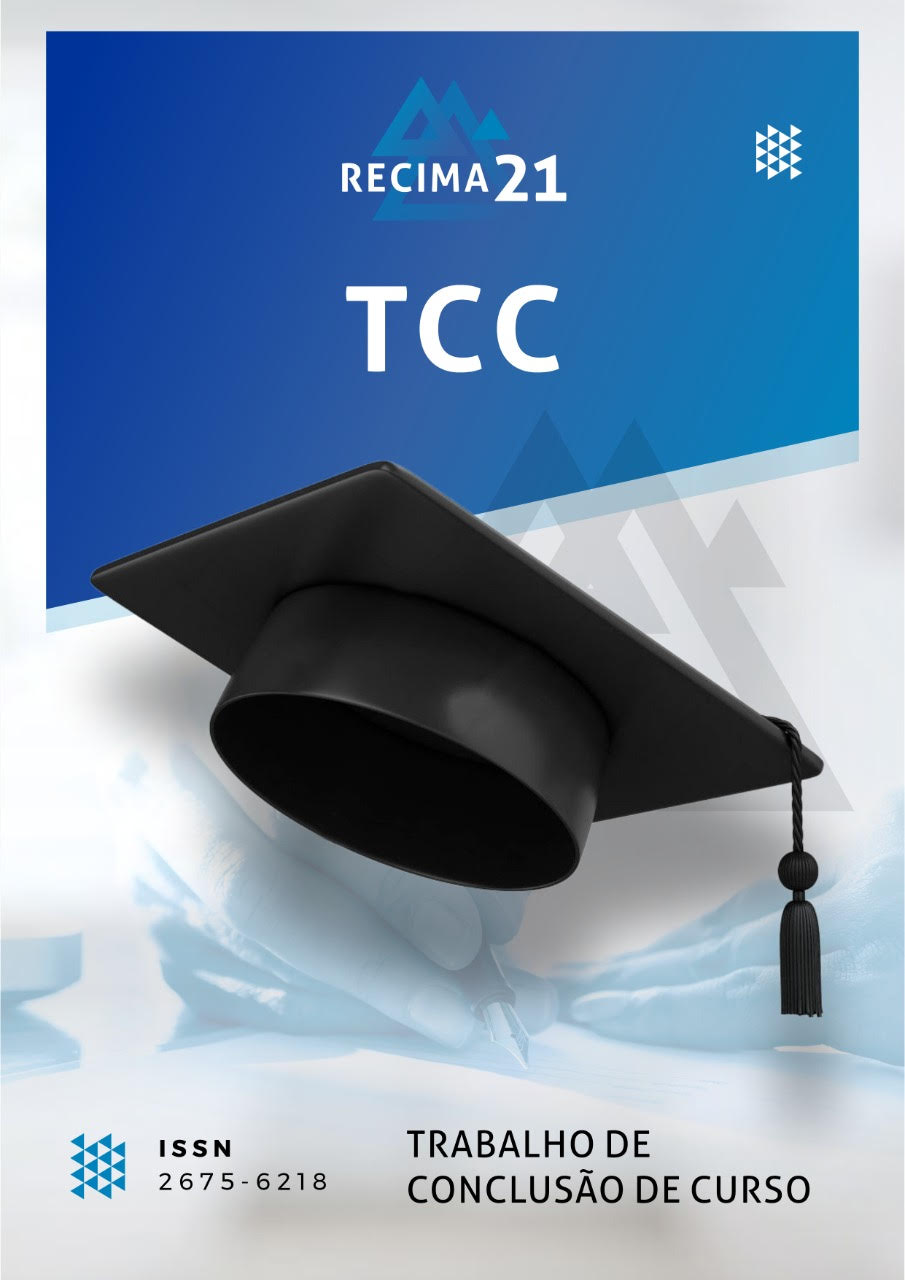FLEXIBILIDADE EM SISTEMAS ELETRÔNICOS: IMPLEMENTAÇÃO DINÂMICA DE FUNCIONALIDADES EM DISPOSITIVOS DE ELETRÔNICA PROGRAMÁVEL
DOI:
https://doi.org/10.47820/recima21.v5i8.5643Palavras-chave:
FPGA, SOFT CORE, Eletrônica programável, Sustentabilidade, GiroscópioResumo
Este artigo apresenta o potencial evolucionário dos dispositivos lógicos programáveis FPGA (Field Programmable Gate Array) na transformação do desenvolvimento e atualização de equipamentos eletrônicos. Ele se concentra na implementação de um Soft Core, que é um núcleo de processamento adaptável e configurável por software, que potencializa o processamento e a flexibilidade dos sistemas. O objetivo é explorar a aplicabilidade prática desta tecnologia, demonstrando o desenvolvimento de um sistema baseado na FPGA Spartan 7 da XILINX. A metodologia considerou o uso da suíte VIVADO para configurar os Blocos Lógicos programáveis, a implementação de um Soft Core e o IDE VITIS da XILINX, onde foi desenvolvido um firmware em C. Os principais resultados obtidos foram a integração inicial de um sensor de temperatura. Posteriormente suas funcionalidades foram ampliadas com a ativação de um sensor do tipo giroscópio. Os resultados foram validados com o uso do analisador lógico Analog Discovery 2 da DIGILENT. O artigo conclui que a adoção dessa tecnologia pode eliminar a necessidade de revisões físicas das placas eletrônicas diante da necessidade de adição de novas funcionalidades, resultando em economia significativa de tempo, custo e recursos. Foi proposta uma abordagem que não apenas aumenta a flexibilidade e adaptabilidade dos equipamentos eletrônicos, mas também estende sua vida útil e alinha o design do produto às necessidades específicas dos clientes. Esta abordagem representa um avanço substancial na criação de soluções eletrônicas sustentáveis, de menor consumo energético, mais eficientes e flexíveis.
Downloads
Referências
AZIZ, Syed Mahfuzul et al. Remote reconfiguration of FPGA-based wireless sensor nodes for flexible Internet of Things. Computers and Electrical Engineering, v. 100, 31 mar. 2022. doi.org/10.1016/j.compeleceng.2022.107935. DOI: https://doi.org/10.1016/j.compeleceng.2022.107935
BEGGS, Arthur de Natos. Projeto e Desenvolvimento de processadores RISC-V: em FPGA. Brasilia, 2021. Trabalho de Conclusão de Curso (Engenharia Mecatrônica) - Universidade de Brasília, Brasilia, 2021.
DUARTE, Newton Silva. A Dinâmica Ética das Máquinas em Inteligência Artificial: O Novo Papel do Professor de Filosofia. Revista Ibero-Americana de Humanidades, Ciências e Educação, v. 7, n. 6, p. 968-995, 2021. doi.org/10.51891/rease.v7i6.1446, 2021. DOI: https://doi.org/10.51891/rease.v7i6.1446
FAISAL, I. Arun; PURBOYO, T. Waluyo; ANSORI, A. A Review of accelerometer sensor and gyroscope sensor in IMU sensors. J. Eng. Appl. Sci, v. 15, n. 3, p. 826-829, 2019. DOI: https://doi.org/10.36478/jeasci.2020.826.829
FU, Xiang. A heterogeneous quantum computer architecture. In: PROCEEDINGS OF THE ACM INTERNATIONAL CONFERENCE ON COMPUTING FRONTIERS. 2016, p. 323-330. DOI: https://doi.org/10.1145/2903150.2906827
GRAY, I. GRVI Phalanx: A Massively Parallel RISC-V FPGA Accelerator. In: IEEE 24TH ANNUAL INTERNATIONAL SYMPOSIUM ON FIELD-PROGRAMMABLE CUSTOM COMPUTING MACHINES (FCCM). 2016, doi: 10.1109/FCCM.2016.12.: IEEE, p. 17-20. DOI: https://doi.org/10.1109/FCCM.2016.12
GUNDERSEN, Martin. Analyzing an FPGA Neural Network Accelerator Design for Implementation in an ASIC. 2019 Tese (Doutoado) - Faculty of Information Technology and Electrical Engineering, Ntnu - Norwegian University Of Sciences And Technology, 2019.
HOLLER, R et al. Open-Source RISC-V Processor IP Cores for FPGAs: Overview and Evaluation. In: 8TH MEDITERRANEAN CONFERENCE ON EMBEDDED COMPUTING (MECO), BUDVA, MONTENEGRO, 2019. doi: 10.1109/MECO.2019.8760205, p. 1-6. DOI: https://doi.org/10.1109/MECO.2019.8760205
IEEE. Open Hardware: From open systems (OCP) to ISAs (RISC-V) and interconnects (CXL, UCIe) the open-source movement will expand into hardware. Technology Predictions, p. 24, 2023.
LAVEZ, Natalie; DE SOUZA, Vivian Mansano; LEITE, Paulo Roberto. O papel da logística reversa no reaproveitamento do “lixo eletrônico”: um estudo no setor de computadores. Revista de Gestão Social e Ambiental, v. 5, n. 1, 2011. DOI: https://doi.org/10.5773/rgsa.v5i1.263
LINDHOLM, Erik, et al. "NVIDIA Tesla: A unified graphics and computing architecture." IEEE Micro, v. 28, n. 2, p. 39-55, 2008. doi:10.1109/MM.2008.31. DOI: https://doi.org/10.1109/MM.2008.31
PATEL, Shyamal, et al. "A review of wearable sensors and systems with application in rehabilitation." Journal of Neuro Engineering and Rehabilitation, v. 9, n. 1, p. 1-17, 2012. doi:10.1186/1743-0003-9-21. DOI: https://doi.org/10.1186/1743-0003-9-21
RIEGER, Michael L. Retrospective on VLSI value scaling and lithography. Journal of Micro/Nanolitography, MEMS, and MOEMS, v. 18, n. 4, 26 nov. 2019. doi: 10.1117/1.JMM.18.4.040902. DOI: https://doi.org/10.1117/1.JMM.18.4.040902
ROCKETT, Leonard et al. Radiation-hardened FPGA technology for space applications. In: IEEE AEROSPACE CONFERENCE, p. 1-7, 2007. DOI: https://doi.org/10.1109/AERO.2007.353098
ROSSINI, Valéria; NASPOLINI, S. H. D. F. Obsolescência programada e meio ambiente: a geração de resíduos de equipamentos eletroeletrônicos. Revista de direito e sustentabilidade, v. 3, n. 1, p. 51-71, 2017. DOI: https://doi.org/10.26668/IndexLawJournals/2525-9687/2017.v3i1.2044
SHI, Weisong, et al. "Edge computing: Vision and challenges." IEEE Internet of Things Journal, v. 3, n. 5, p. 637-646, 2016. doi:10.1109/JIOT.2016.2579198. DOI: https://doi.org/10.1109/JIOT.2016.2579198
TANENBAUM, Andrew; FEAMSTER, Nick; WETHERALL, David. Redes de Computadores. Porto Alegre: Bookman Editora, 2021. 796 p.
TRIMBERGER, Stephen M. Field-Programmable Gate Array Technology. Proceedings of the IEEE, v. 81, n. 7, p. 1031-1040, 1993. doi:10.1109/5.231342. DOI: https://doi.org/10.1109/5.231342
Downloads
Publicado
Edição
Seção
Categorias
Licença
Copyright (c) 2024 RECIMA21 - Revista Científica Multidisciplinar - ISSN 2675-6218

Este trabalho está licenciado sob uma licença Creative Commons Attribution 4.0 International License.
Os direitos autorais dos artigos/resenhas/TCCs publicados pertecem à revista RECIMA21, e seguem o padrão Creative Commons (CC BY 4.0), permitindo a cópia ou reprodução, desde que cite a fonte e respeite os direitos dos autores e contenham menção aos mesmos nos créditos. Toda e qualquer obra publicada na revista, seu conteúdo é de responsabilidade dos autores, cabendo a RECIMA21 apenas ser o veículo de divulgação, seguindo os padrões nacionais e internacionais de publicação.













